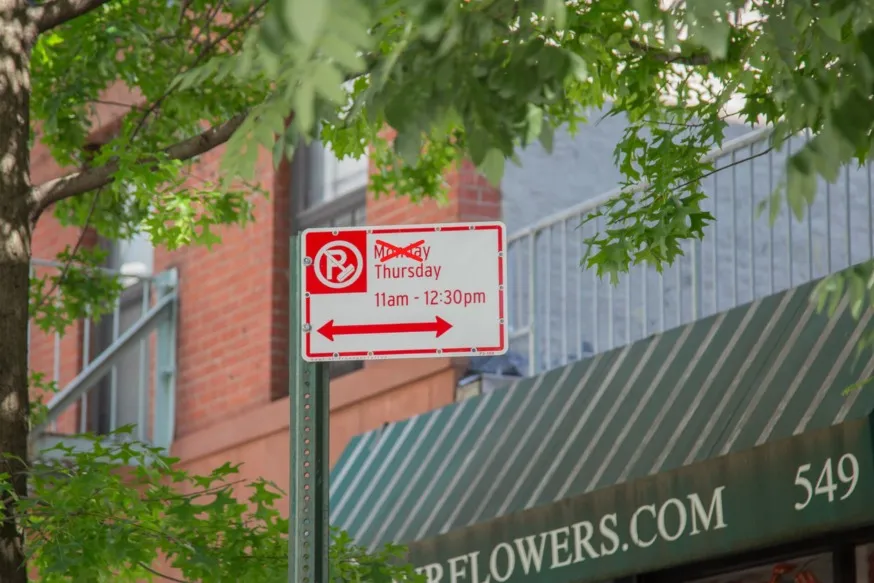Alternate Side Parking Made Easy and Stress-Free
Alternate side parking is one of the most prevalent rules and restrictions you’ll encounter when you live in a crowded metropolis. Although the purpose of the system is to maintain clear and clean streets, drivers may find it to be a challenging game at times. You understand how crucial it is to follow this rule if you have ever forgotten to relocate your car or been rushing to find the ideal parking space.
Understanding the rhythm of the streets and avoiding costly ticket traps are more important than simply getting your car moved on time when using alternate side parking. Particularly in congested urban areas with limited parking spaces, knowing when and where to park can make a big difference. Getting it right means avoiding fines and keeping your automobile in a safe position.
Understanding Alternate Side Parking: What You Need to Know
In order to maintain clean streets and efficient traffic flow, many urban regions implement alternate side parking. Even though it might not seem like much, breaking these rules can lead to fines and parking tickets. In order for this system to function, drivers must park on one side of the street on certain days and move to the other on other days. Although it can be inconvenient, its purpose is to prevent cars from blocking roads and to make street cleaning easier.
It’s possible that every city or neighborhood has its own alternate-side parking schedule and regulations. Being aware of these schedules, which are typically displayed on street signs, might help you avoid the aggravation that comes with receiving a ticket. Although the system is usually in effect during street cleaning hours, it may sometimes be applicable for other purposes, such as snow removal or maintenance, depending on where you live.
Everyone who lives in a city or town that uses alternative side parking needs to get used to it. Knowing how it operates will help you prevent needless worry, whether you’re a guest or a new resident. You may easily navigate this urban difficulty if you are aware of the posted signs and the local regulations.

The Importance of Checking Street Signs for Alternate Side Parking
The key to understanding alternate side parking regulations is street signage. These indicators offer crucial and unambiguous information; without them, you would be left in the dark and hoping for the best. Usually, they indicate which days restrictions are in place as well as when parking is permitted on each side of the street. Most drivers would rather avoid the inconvenience of receiving a parking charge, which might result from ignoring or misinterpreting these warnings.
Some signs not only display parking schedules but also the hours that alternative side parking is enforced. Signs indicating cleaning hours or times when parking is prohibited on a particular side of the street, for example, may be present.To make sure you’re in the correct place at the right time, it’s imperative that you carefully read these signs. Particularly during holidays or seasonal changes, when alternate side parking regulations may change, pay extra attention to specifics like “no parking” hours and designated days.
Never assume that the regulations governing alternate side parking apply everywhere because various communities may have distinct variants. Make it a practice to verify the signs by taking a moment to look them over each time you park. By taking this one step, you can guarantee that your automobile is always parked in the proper spot and avoid needless fines.
How to Stay on Top of Alternate Side Parking Schedules
It might occasionally feel like a juggling act to keep up with alternate side parking schedules, particularly if you’re balancing other obligations like work or school. Setting a reminder is one of the simplest ways to remember when to move your automobile. To ensure that you never forget to swap sides again, you can set up recurring notifications for street cleaning schedules using a variety of calendar applications and smartphone apps.
There are apps or websites that track parking schedules for you in certain cities or localities. You may get up-to-date information about alternate side parking regulations in real time with these tools.To lower your chance of forgetting and receiving a ticket, they can even give you a push message to tell you when to move your car.
An additional successful tactic is to observe trends. After parking in the same spot for some time, you’ll become aware of when the streets are cleared or when parking restriction signs are shown. Moving your car will become second nature when you eventually grow used to the alternative side parking routine in your neighborhood.
Common Mistakes to Avoid with Alternate Side Parking
Misreading street signs is one of the most frequent errors made when parking on the other side. It’s simple to overlook a detail because these signs frequently include several pieces of information, such as parking days, street cleaning hours, and specific exceptions. Always double-check the sign before getting out of your car because even a minor error could result in a penalty or towing.
Ignoring specific schedules, such as holidays or seasonal shifts, is another error. For instance, alternate side parking regulations may modify in the winter to provide for snow removal.You could wind up parking on the incorrect side and incur a fee if you’re not aware of these changes. Any temporary schedule modifications in your region should be kept up to date; these can frequently be found online or in local bulletins.
Lastly, another mistake to avoid is parking too close to an intersection, fire hydrant, or other forbidden areas. This is a problem that can lead to fines or even towing, even if it has nothing to do with parking on the other side. To protect your automobile from fines, make sure you abide by all parking regulations, not only the ones that apply to the other side.
The Benefits of Alternate Side Parking Systems
Alternate side parking may occasionally seem like a hassle, but it has a bigger benefit by maintaining accessible and clean public roadways. Alternate side parking guarantees that the cleaning staff has access to every area of the street, which is crucial for reducing the accumulation of trash, filth, and debris. Road cleanliness would be considerably more difficult to maintain without this system, and the streets might get cluttered and ugly.
The better traffic flow is another advantage of parking on the other side. Congestion is lessened when cars are shifted to other sides of the road, giving other cars greater room to pass. This is especially crucial in crowded cities where there is a shortage of space and effective traffic movement.
Finally, parking on the opposite side can also increase safety. This technology contributes to fewer accidents and safer streets for all by routinely removing debris from the roadways and making more room for vehicles, pedestrians, and bikes. Alternate side parking makes it safer to travel during the winter months by ensuring that snowplows have ample space to clean the roads in places with high snowfall.






